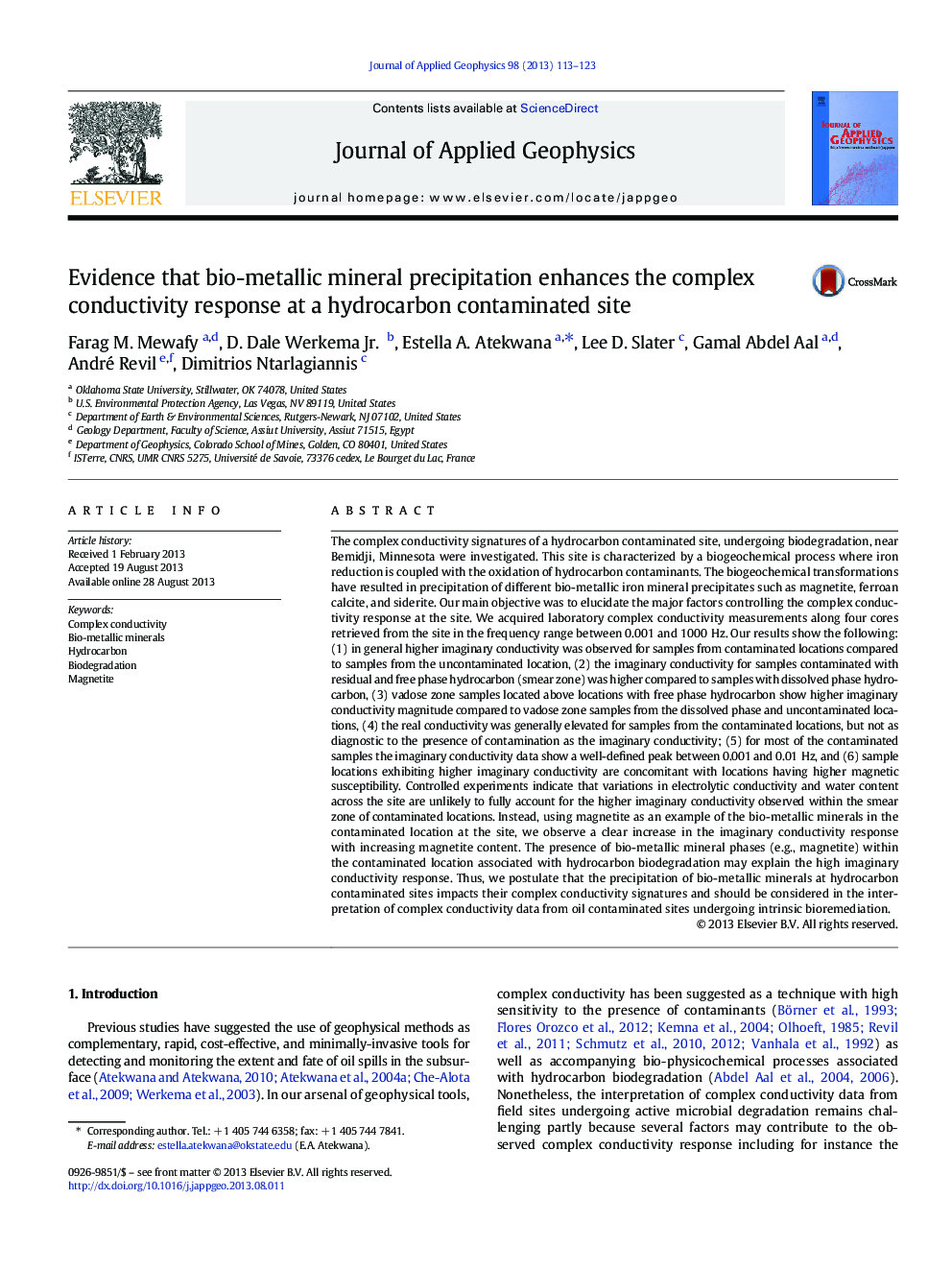| کد مقاله | کد نشریه | سال انتشار | مقاله انگلیسی | نسخه تمام متن |
|---|---|---|---|---|
| 4740269 | 1641153 | 2013 | 11 صفحه PDF | دانلود رایگان |
• We studied the complex conductivity (CC) response at a hydrocarbon contaminated site.
• We also conducted controlled experiments simulating the field conditions.
• Higher CC is observed in contaminated samples especially within the smear zone.
• Higher CC is also concomitant with zones of elevated magnetic susceptibility.
• We infer that bio-metallic minerals such as magnetite impact the CC signature.
The complex conductivity signatures of a hydrocarbon contaminated site, undergoing biodegradation, near Bemidji, Minnesota were investigated. This site is characterized by a biogeochemical process where iron reduction is coupled with the oxidation of hydrocarbon contaminants. The biogeochemical transformations have resulted in precipitation of different bio-metallic iron mineral precipitates such as magnetite, ferroan calcite, and siderite. Our main objective was to elucidate the major factors controlling the complex conductivity response at the site. We acquired laboratory complex conductivity measurements along four cores retrieved from the site in the frequency range between 0.001 and 1000 Hz. Our results show the following: (1) in general higher imaginary conductivity was observed for samples from contaminated locations compared to samples from the uncontaminated location, (2) the imaginary conductivity for samples contaminated with residual and free phase hydrocarbon (smear zone) was higher compared to samples with dissolved phase hydrocarbon, (3) vadose zone samples located above locations with free phase hydrocarbon show higher imaginary conductivity magnitude compared to vadose zone samples from the dissolved phase and uncontaminated locations, (4) the real conductivity was generally elevated for samples from the contaminated locations, but not as diagnostic to the presence of contamination as the imaginary conductivity; (5) for most of the contaminated samples the imaginary conductivity data show a well-defined peak between 0.001 and 0.01 Hz, and (6) sample locations exhibiting higher imaginary conductivity are concomitant with locations having higher magnetic susceptibility. Controlled experiments indicate that variations in electrolytic conductivity and water content across the site are unlikely to fully account for the higher imaginary conductivity observed within the smear zone of contaminated locations. Instead, using magnetite as an example of the bio-metallic minerals in the contaminated location at the site, we observe a clear increase in the imaginary conductivity response with increasing magnetite content. The presence of bio-metallic mineral phases (e.g., magnetite) within the contaminated location associated with hydrocarbon biodegradation may explain the high imaginary conductivity response. Thus, we postulate that the precipitation of bio-metallic minerals at hydrocarbon contaminated sites impacts their complex conductivity signatures and should be considered in the interpretation of complex conductivity data from oil contaminated sites undergoing intrinsic bioremediation.
Journal: Journal of Applied Geophysics - Volume 98, November 2013, Pages 113–123
